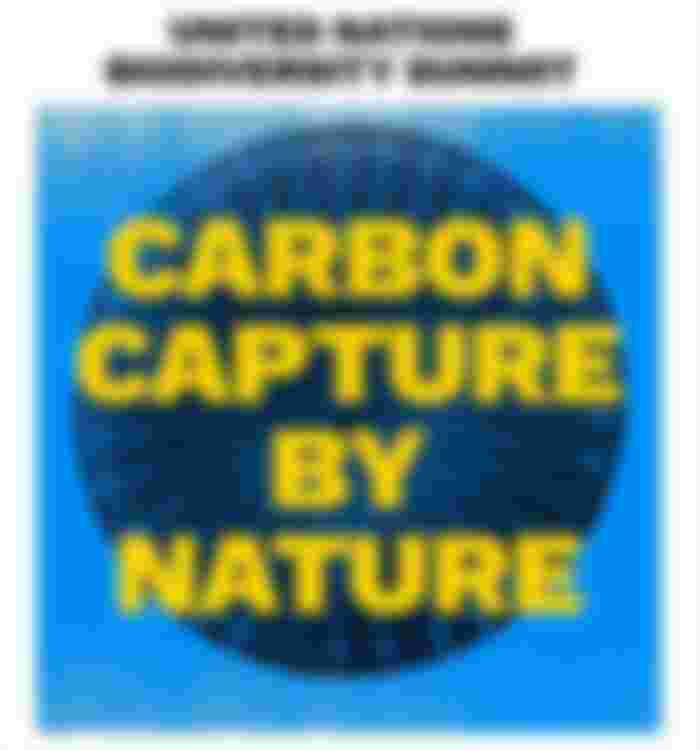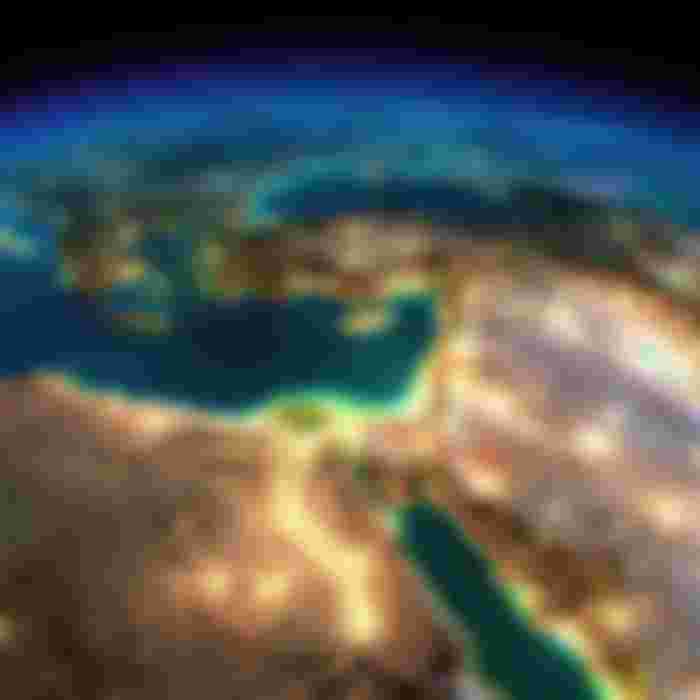Global Warming
Everything you wanted to know about our changing climate but were too afraid to ask.

Jump to Section:
What Is Global Warming?
What Causes Global Warming?
How Is Global Warming Linked to Extrem

e Weather?
What Are the Other Effects of Global Warming?
Where Does the United States Stand in Terms of Global-Warming Contributors?
Is the United States Doing Anything To Prevent Global Warming?
Is Global Warming Too Big of a Problem for Me to Help Tackle?
Q: What is global warming?
A: Here's a simple definition of global warming. (And yes, it's really happening.) Over the past 50 years, the average global temperature has increased at the fastest rate in recorded history. And experts see the trend is accelerating: All but one of the 16 hottest years in NASA’s 134-year record have occurred since 2000.

Climate change deniers have argued that there has been a “pause” or a “slowdown” in rising global temperatures, but several recent studies, including a 2015 paper published in the journal Science, have disproved this claim. And scientists say that unless we curb global-warming emissions, average U.S. temperatures could increase by up to 10 degrees Fahrenheit over the next century.
Q: What causes global warming?
A: Global warming occurs when carbon dioxide (CO2) and other air pollutants and greenhouse gases collect in the atmosphere and absorb sunlight and solar radiation that have bounced off the earth’s surface. Normally, this radiation would escape into space—but these pollutants, which can last for years to centuries in the atmosphere, trap the heat and cause the planet to get hotter. That's what's known as the greenhouse effect.
In the United States, the burning of fossil fuels to make electricity is the largest source of heat-trapping pollution, producing about two billion tons of CO2 every year. Coal-burning power plants are by far the biggest polluters. The country’s second-largest source of carbon pollution is the transportation sector, which generates about 1.7 billion tons of CO2 emissions a year.

Curbing dangerous climate change requires very deep cuts in emissions, as well as the use of alternatives to fossil fuels worldwide. The good news is that we’ve started a turnaround: CO2 emissions in the United States actually decreased from 2005 to 2014, thanks in part to new, energy-efficient technology and the use of cleaner fuels. And scientists continue to develop new ways to modernize power plants, generate cleaner electricity, and burn less gasoline while we drive. The challenge is to be sure these solutions are put to use and widely adopted.
Q: How is global warming linked to extreme weather?
A: Scientists agree that the earth’s rising temperatures are fueling longer and hotter heat waves, more frequent droughts, heavier rainfall, and more powerful hurricanes. In 2015, for example, scientists said that an ongoing drought in California—the state’s worst water shortage in 1,200 years—had been intensified by 15 percent to 20 percent by global warming. They also said the odds of similar droughts happening in the future had roughly doubled over the past century. And in 2016, the National Academies of Science, Engineering, and Medicine announced that it’s now possible to confidently attribute certain weather events, like some heat waves, directly to climate change.
The earth’s ocean temperatures are getting warmer, too—which means that tropical storms can pick up more energy. So global warming could turn, say, a category 3 storm into a more dangerous category 4 storm. In fact, scientists have found that the frequency of North Atlantic hurricanes has increased since the early 1980s, as well as the number of storms that reach categories 4 and 5. In 2005, Hurricane Katrina—the costliest hurricane in U.S. history—struck New Orleans; the second-costliest, Hurricane Sandy, hit the East Coast in 2012.
The impacts of global warming are being felt across the globe. Extreme heat waves have caused tens of thousands of deaths around the world in recent years. And in an alarming sign of events to come, Antarctica has been losing about 134 billion metric tons of ice per year since 2002. This rate could speed up if we keep burning fossil fuels at our current pace, some experts say, causing sea levels to rise several meters over the next 50 to 150 years.
Q: What are the other effects of global warming?
A: Each year, scientists learn more about the consequences of global warming, and many agree that environmental, economic, and health consequences are likely to occur if current trends continue. Here’s just a smattering of what we can look forward to:
Melting glaciers, early snowmelt, and severe droughts will cause more dramatic water shortages and increase the risk of wildfires in the American West.
Rising sea levels will lead to coastal flooding on the Eastern Seaboard, especially in Florida, and in other areas such as the Gulf of Mexico.
Forests, farms, and cities will face troublesome new pests, heat waves, heavy downpours, and increased flooding. All those factors will damage or destroy agriculture and fisheries.
Disruption of habitats such as coral reefs and Alpine meadows could drive many plant and animal species to extinction.
Allergies, asthma, and infectious disease outbreaks will become more common due to increased growth of pollen-producing ragweed, higher levels of air pollution, and the spread of conditions favorable to pathogens and mosquitoes.
Q: Where does the United States stand in terms of global-warming contributors?

A: In recent years, China has taken the lead in global-warming pollution, producing about 28 percent of all CO2 emissions. The United States comes in second. Despite making up just 4 percent of the world’s population, we produce a whopping 16 percent of all global CO2 emissions—as much as the European Union and India (third and fourth place) combined. And America is still number one, by far, in cumulative emissions over the past 150 years. Our responsibility matters to other countries, and it should matter to a usmatter
Q: Is the United States doing anything to prevent global warming?
A: We’ve started. But in order to avoid the worst effects of climate change, we need to do a lot more—together with other countries—to reduce our dependence on fossil fuels and start using clean energy instead.
In 2015, the U.S. Environmental Protection Agency pledged to reduce carbon pollution from our power plants by nearly a third by 2030, relative to 2005 levels, through its Clean Power Plan. But fast-forward to 2017, and under the Trump Administration, the EPA proposed repealing this critical tool for curbing climate change. Likewise, while under the Obama administration, the U.S. Department of Transportation proposed carbon pollution and fuel economy standards intended to cut emissions through the 2020s, under Trump administration, the DOT is working to roll back those clean vehicle safeguards that protect the climate and our health.
Fortunately, state leaders—including in car country itself—recognize that clean transportation must remain a priority if we are to address the costly risks of climate change and protect public health. And regional efforts around the country are helping to boost the electric car market, which saw an increase in sales for 2017 over 2016. Our clean energy economy is growingtoo, despite federal efforts to derail it. In 2016, wind employment grew by 32 percent and solar jobs increased by 25 percent.
Globally, at the United Nations Conference on Climate Change in Paris, 195 countries—including the United States, at the time—agreed to pollution-cutting provisions with a goal of preventing the average global temperature from rising more than 1.5 degrees Celsius above preindustrial times. (Scientists say we must stay below a two-degree increase to avoid catastrophic climate impacts.)
To help make the deal happen, the Obama administration pledged $3 billion to the Green Climate Fund, an international organization dedicated to helping poor countries adopt cleaner energy technologies. Under the terms of the Paris agreement, participating nations will meet every five years, starting in 2020, to revise their plans for cutting CO2 emissions. Beginning in 2023, they will also have to publicly report their progress.
While in 2017, President Trump announced the country’s withdrawal from the Paris climate agreement and to eliminate “harmful and unnecessary policies such as the Climate Action Plan,” Americans are forging ahead without him. Through initiatives like the United States Climate Alliance, the Regional Greenhouse Gas Initiative, We Are Still In, and Climate Mayors, state, business, and local leaders have pledged to honor and uphold the goals of the Paris Agreement. More than 25 cities in 17 states, with populations totaling more than 5 million have adopted resolutions that will enable them to get 100 percent of their electricity from renewable sources like wind and solar.
Even better, a new initiative by former New York City mayor Michael Bloomberg gives the urban layer of this movement a boost. He’s asked mayors from the 100 most populous cities in the country to share their plans for making their buildings and transportation systems run cleaner and more efficiently. The 20 that show the greatest potential for cutting the dangerous carbon pollution that’s driving climate change will share a total of $70 million in technical assistance funding provided by Bloomberg Philanthropies and partners.
Q: Is global warming too big of a problem for me to help tackle?
A: Wondering how to stop global warming? Reduce your own carbon footprint by following a few easy steps. Make conserving energy a part of your daily routine and your decisions as a consumer. When you shop for new appliances like refrigerators, washers, and dryers, look for products with the government’s Energy Star label; they meet a higher standard for energy efficiency than the minimum federal requirements. When you buy a car, look for one with the highest gas mileage and lowest emissions. You can also reduce your emissions by taking public transportation or carpooling when possible.
And while new federal and state standards are a step in the right direction, much more needs to be done. Voice your support of climate-friendly and climate change preparedness policies, and tell your representatives that transitioning from dirty fossil fuels to clean power should be a top priority—because it’s vital to building healthy, more secure communities.
Hurricanes and Climate Change: Everything You Need to Know
The most widespread, damaging storms on earth are getting worse, and climate change is a big reason why. Here’s a look at what causes hurricanes and how to address the threat of a wetter, windier world.
Are the Effects of Global Warming Really that Bad?
Short answer: Yes. Even a seemingly slight average temperature rise is enough to cause a dramatic transformation of our planet.
5 Ways City Dwellers Can Spur Climate Action

What is your city doing about climate change? Ask your local leaders these five questions.
Air Pollution: Everything You Need to Know
How smog, soot, greenhouse gases, and other top air pollutants are affecting the planet—and your health.
Climate Change Is In the Air
As temperatures and carbon levels rise, even breathing has become a challenge. Here’s what you can do to help clear the air.
Can I Participate in a Class-Action Lawsuit Against Climate Change Inaction?
NRDC senior attorney Ben Longstreth explains how plaintiffs for these cases get chosen—and how you can help advance the cause in or out of the courtroom.
If the Government Won’t Act on Climate, Maybe Banks Will
Gun-control activists want to use financial levers to curtail firearm sales. Can we do the same for carbon emissions?
### Bangla Translate ###
* বৈশ্বিক উষ্ণতা *
আমাদের পরিবর্তিত জলবায়ু সম্পর্কে আপনি যা জানতে চেয়েছিলেন তা জিজ্ঞাসা করতে খুব ভয় পেয়েছিলেন।
বিভাগে যান: বৈশ্বিক উষ্ণতা কী?

গ্লোবাল ওয়ার্মিংয়ের কারণ কী?
কীভাবে গ্লোবাল ওয়ার্মিং চরম আবহাওয়ার সাথে যুক্ত?
গ্লোবাল ওয়ার্মিং এর অন্যান্য প্রভাবগুলি কী কী?
বিশ্বব্যাপী উষ্ণায়নের অবদানকারীদের শর্তে মার্কিন যুক্তরাষ্ট্র কোথায় দাঁড়িয়ে আছে?
আমেরিকা যুক্তরাষ্ট্র কি বিশ্বব্যাপী উষ্ণতা রোধে কিছু করছে?
গ্লোবাল ওয়ার্মিং মোকাবেলা করতে সহায়তা করার জন্য আমার পক্ষে সমস্যা কি খুব বড়?
প্রশ্ন: গ্লোবাল ওয়ার্মিং কী?
উত্তর: এখানে গ্লোবাল ওয়ার্মিংয়ের একটি সাধারণ সংজ্ঞা দেওয়া আছে। (এবং হ্যাঁ, এটি সত্যই ঘটছে)) গত ৫০ বছরেরও বেশি সময় ধরে, বিশ্বব্যাপী গড় তাপমাত্রা রেকর্ডকৃত ইতিহাসের দ্রুততম হারে বেড়েছে। এবং বিশেষজ্ঞরা দেখছেন যে প্রবণতাটি ত্বরান্বিত হচ্ছে: নাসার 134 বছরের রেকর্ডে 16 টি সবচেয়ে গরম বছরের মধ্যে 2000 বাদে সমস্ত ঘটেছে। জলবায়ু পরিবর্তন অস্বীকারকারীরা যুক্তি দেখিয়েছেন যে ক্রমবর্ধমান বৈশ্বিক তাপমাত্রায় "বিরতি" বা "মন্দা" রয়েছে, তবে সাম্প্রতিক বিজ্ঞান জার্নালে প্রকাশিত ২০১৫ সালের একটি গবেষণাপত্র সহ বেশ কয়েকটি সাম্প্রতিক গবেষণা এই দাবিটিকে অস্বীকার করেছে। এবং বিজ্ঞানীরা বলছেন যে আমরা বিশ্বব্যাপী উষ্ণায়ন নির্গমনকে রোধ না করা পর্যন্ত পরবর্তী শতাব্দীতে মার্কিন যুক্তরাষ্ট্রের গড় তাপমাত্রা 10 ডিগ্রি ফারেনহাইট পর্যন্ত বৃদ্ধি পেতে পারে।
প্রশ্ন: বিশ্ব উষ্ণায়নের কারণ কী?
উত্তর: গ্লোবাল ওয়ার্মিং তখনই ঘটে যখন কার্বন ডাই অক্সাইড (সিও 2) এবং অন্যান্য বায়ু দূষণকারী এবং গ্রিনহাউস গ্যাস বায়ুমণ্ডলে সংগ্রহ করে এবং সূর্যের আলো এবং সৌর বিকিরণগুলি শুষে নেয় যা পৃথিবীর উপরিভাগকে ছাড়িয়ে যায়। সাধারণত, এই বিকিরণ মহাশূন্যে পালাতে পারে - তবে এই দূষকগুলি, যা বায়ুমণ্ডলে বছরের পর শতাব্দী ধরে স্থায়ী হতে পারে, তাপকে আটকে রাখে এবং গ্রহকে আরও গরম করার কারণ হতে পারে। গ্রিনহাউস এফেক্ট হিসাবে এটিই পরিচিত। মার্কিন যুক্তরাষ্ট্রে, বিদ্যুত তৈরিতে জীবাশ্ম জ্বালানি পোড়ানো তাপ-জালিয়াতির দূষণের বৃহত্তম উত্স, প্রতি বছর প্রায় দুই বিলিয়ন টন সিও 2 উত্পাদন করে। কয়লা জ্বলন্ত বিদ্যুৎকেন্দ্রগুলি এখন পর্যন্ত বৃহত্তম দূষণকারী। দেশটির কার্বন দূষণের দ্বিতীয় বৃহত্তম উত্স হ'ল পরিবহন খাত, যা বছরে প্রায় 1.7 বিলিয়ন টন সিও 2 নির্গমন উৎপন্ন করে। বিপজ্জনক জলবায়ু পরিবর্তনের প্রতিরোধের জন্য নির্গমনে খুব গভীর কমানোর পাশাপাশি বিশ্বব্যাপী জীবাশ্ম জ্বালানীর বিকল্পের ব্যবহার প্রয়োজন। সুসংবাদটি হ'ল আমরা একটি টার্নআরন্ড শুরু করেছি: মার্কিন যুক্তরাষ্ট্রে CO2 নির্গমন আসলে ২০০৫ থেকে ২০১৪ সাল পর্যন্ত হ্রাস পেয়েছে, নতুন, শক্তি-দক্ষ প্রযুক্তি এবং ক্লিনার জ্বালানীর ব্যবহারের জন্য ধন্যবাদ। এবং বিজ্ঞানীরা বিদ্যুৎকেন্দ্রগুলিকে আধুনিকীকরণ, ক্লিনার বিদ্যুৎ উত্পাদন, এবং গাড়ি চালানোর সময় কম পেট্রল পোড়াতে নতুন উপায় বিকাশ অব্যাহত রেখেছেন। চ্যালেঞ্জ হ'ল এই সমাধানগুলি ব্যবহারের জন্য এবং ব্যাপকভাবে গৃহীত হয়েছে তা নিশ্চিত হওয়া।
প্রশ্ন: গ্লোবাল ওয়ার্মিং কীভাবে চরম আবহাওয়ার সাথে যুক্ত?
উত্তর: বিজ্ঞানীরা সম্মত হন যে পৃথিবীর ক্রমবর্ধমান তাপমাত্রা দীর্ঘতর ও উত্তপ্ত উত্তাপের তরঙ্গ, আরও ঘন ঘন খরা, ভারী বৃষ্টিপাত এবং আরও শক্তিশালী হারিকেন জ্বালিয়ে তুলছে। উদাহরণস্বরূপ, 2015 সালে, বিজ্ঞানীরা বলেছিলেন যে ক্যালিফোর্নিয়ায় চলমান খরা - এই রাজ্যের 1,200 বছরের মধ্যে সবচেয়ে খারাপ পানির ঘাটতি - বিশ্ব উষ্ণায়নের ফলে 15 শতাংশ থেকে 20 শতাংশ তীব্র হয়েছিল।
তারা আরও বলেছিল যে ভবিষ্যতে একই রকমের খরার প্রতিকূলতা গত শতাব্দীতে প্রায় দ্বিগুণ হয়েছিল। এবং ২০১ in সালে, বিজ্ঞান, প্রকৌশল ও মেডিসিনের জাতীয় একাডেমি ঘোষণা করেছিল যে কিছু আবহাওয়ার ঘটনা যেমন কিছু উত্তাপ তরঙ্গের মতো সরাসরি জলবায়ু পরিবর্তনের জন্য দায়ী করা এখন আত্মবিশ্বাসের সাথে সম্ভব। পৃথিবীর সমুদ্রের তাপমাত্রাও উষ্ণ হয়ে উঠছে — যার অর্থ গ্রীষ্মমন্ডলীয় ঝড় আরও বেশি শক্তি নিতে পারে। সুতরাং গ্লোবাল ওয়ার্মিংটি বলতে পারে, একটি বিভাগ 3 ঝড়কে আরও বিপজ্জনক বিভাগ 4 ঝড় হিসাবে রূপান্তর করতে পারে। প্রকৃতপক্ষে, বিজ্ঞানীরা আবিষ্কার করেছেন যে ১৯৮০ এর দশকের গোড়ার দিকে উত্তর আটলান্টিক হারিকেনগুলির ফ্রিকোয়েন্সি বৃদ্ধি পেয়েছে, পাশাপাশি ঝড়ের সংখ্যাও 4 এবং 5 বিভাগে পৌঁছেছে, ২০০৫ সালে মার্কিন ইতিহাসে সবচেয়ে ব্যয়বহুল হারিকেন হারিকেন ক্যাটরিনা নিউ অরলিন্সকে আঘাত করেছিল। ;
দ্বিতীয় ব্যয়বহুল, হারিকেন স্যান্ডি ২০১২ সালে পূর্ব উপকূলে আঘাত হানে। বিশ্ব উষ্ণায়নের প্রভাব বিশ্বজুড়ে অনুভূত হচ্ছে। চরম উত্তাপের তরঙ্গ সাম্প্রতিক বছরগুলিতে বিশ্বজুড়ে কয়েক হাজার মানুষকে হত্যা করেছে। এবং আসার ঘটনাগুলির উদ্বেগজনক চিহ্ন হিসাবে, অ্যান্টার্কটিকা ২০০২ সাল থেকে প্রতিবছর প্রায় ১৩৪ বিলিয়ন মেট্রিক টন বরফ হারাচ্ছে। আমরা যদি আমাদের বর্তমান গতিতে জীবাশ্ম জ্বালানী জ্বালিয়ে রাখি তবে এই হারটি আরও বাড়তে পারে, কিছু বিশেষজ্ঞ বলেছেন, সমুদ্রের স্তরকে কারণ পরের 50 থেকে 150 বছর ধরে কয়েক মিটার বৃদ্ধি।
প্রশ্ন: গ্লোবাল ওয়ার্মিংয়ের অন্যান্য প্রভাবগুলি কী কী?
উত্তর: প্রতি বছর বিজ্ঞানীরা বৈশ্বিক উষ্ণায়নের পরিণতি সম্পর্কে আরও শিখেন এবং অনেকেই সম্মত হন যে বর্তমান ধারা অব্যাহত থাকলে পরিবেশগত, অর্থনৈতিক এবং স্বাস্থ্যের পরিণতি ঘটতে পারে। এখানে আমরা কী প্রত্যাশা করতে পারি তার একটি ছদ্মবেশ মাত্র: হিমবাহ গলে যাওয়া, প্রারম্ভিক তুষার গলানো এবং মারাত্মক খরার কারণে আরও নাটকীয় জলের ঘাটতি দেখা দেবে এবং আমেরিকান পশ্চিমে দাবানলের ঝুঁকি বাড়বে। সমুদ্রের মাত্রা বাড়ার ফলে পূর্ব সমুদ্র সৈকত, বিশেষত ফ্লোরিডা এবং মেক্সিকো উপসাগরের মতো অন্যান্য অঞ্চলে উপকূলীয় বন্যার সৃষ্টি হবে। বন, খামার এবং শহরগুলি নতুন কীটপতঙ্গ, তাপ wavesেউ, ভারী বর্ষণ এবং বন্যার বর্ধনের মুখোমুখি হবে। এই সমস্ত কারণ কৃষিকাজ এবং ফিশারিগুলিকে ক্ষতিগ্রস্ত বা ধ্বংস করবে। প্রবাল প্রাচীর এবং আলপাইন চারণভূমির মতো আবাসস্থল ব্যাহত হওয়ার ফলে অনেক গাছপালা এবং প্রাণীজ প্রজাতি বিলুপ্ত হতে পারে। অ্যালার্জি, হাঁপানি এবং সংক্রামক রোগের প্রাদুর্ভাবগুলি পরাগ উত্পাদনকারী র্যাগভিডের বৃদ্ধি বৃদ্ধি, বায়ু দূষণের উচ্চ স্তরের এবং রোগজীবাণু এবং মশার পক্ষে অনুকূল অবস্থার বিস্তারজনিত কারণে বেশি সাধারণ হয়ে উঠবে।
প্রশ্ন: বিশ্বব্যাপী উষ্ণায়নের অবদানকারীদের ক্ষেত্রে মার্কিন যুক্তরাষ্ট্র কোথায় অবস্থান করে?
উত্তর: সাম্প্রতিক বছরগুলিতে, চীন বৈশ্বিক উষ্ণায়ন দূষণে নেতৃত্ব দিয়েছে, সমস্ত সিও 2 নির্গমনের প্রায় 28 শতাংশ উত্পাদন করে। মার্কিন যুক্তরাষ্ট্র দ্বিতীয় অবস্থানে আসে। বিশ্বের জনসংখ্যার মাত্র 4 শতাংশ তৈরি করা সত্ত্বেও, আমরা সমস্ত গ্লোবাল সিও 2 নির্গমনগুলির মোট 16 শতাংশ উত্পাদন করি - ইউরোপীয় ইউনিয়ন এবং ভারত (তৃতীয় এবং চতুর্থ স্থান) মিলিয়ে। এবং আমেরিকা এখনও গত দেড়শো বছরে সংখ্যাসূচক উত্স্রবেগে এখনও এক নম্বরে। আমাদের দায়িত্ব অন্যান্য দেশের জন্য গুরুত্বপূর্ণ এবং এটি আমাদেরও গুরুত্বপূর্ণ matter
প্রশ্ন: আমেরিকা যুক্তরাষ্ট্র কি বিশ্বব্যাপী উষ্ণতা রোধে কিছু করছে?
উত্তর: আমরা শুরু করেছি। তবে জলবায়ু পরিবর্তনের সবচেয়ে খারাপ প্রভাব এড়াতে, জীবাশ্ম জ্বালানির উপর আমাদের নির্ভরতা হ্রাস করতে এবং এর পরিবর্তে পরিষ্কার শক্তি ব্যবহার শুরু করার জন্য আমাদের অন্যান্য দেশগুলির সাথে আরও অনেক কিছু করা উচিত। ২০১৫ সালে, মার্কিন পরিবেশ সংরক্ষণ সংরক্ষণ সংস্থা তার পরিষ্কার বিদ্যুৎ পরিকল্পনার মাধ্যমে ২০০৩ স্তরের তুলনায় ২০৩০ সালের মধ্যে আমাদের বিদ্যুৎকেন্দ্রগুলি থেকে কার্বন দূষণ হ্রাস করার প্রতিশ্রুতি দিয়েছে। তবে ২০১ to-তে দ্রুত অগ্রসর হওয়া এবং ট্রাম্প প্রশাসনের অধীনে, ইপিএ জলবায়ু পরিবর্তন রোধে এই সমালোচনামূলক সরঞ্জামটি বাতিল করার প্রস্তাব করেছিল। তেমনি ওবামা প্রশাসনের অধীনে, মার্কিন পরিবহণ অধিদফতর 2020-এর দশকের মধ্যে কার্বন দূষণ এবং জ্বালানী অর্থনীতির মান নির্ধারণের উদ্দেশ্যে প্রস্তাব করেছিল, ট্রাম্প প্রশাসনের অধীনে, ডট জলবায়ু এবং আমাদের স্বাস্থ্য রক্ষা করে এমন পরিষ্কার পরিচ্ছন্ন যানবাহনকে ফিরিয়ে আনার জন্য কাজ করছে ।
সৌভাগ্যক্রমে, রাষ্ট্রের নেতারা- স্বয়ং গাড়ি সহ — স্বীকৃতি দিয়েছেন যে আমরা যদি জলবায়ু পরিবর্তনের ব্যয়বহুল ঝুঁকি মোকাবেলায় এবং জনস্বাস্থ্য রক্ষা করতে চাই তবে পরিষ্কার পরিবহন অবশ্যই অগ্রাধিকার হিসাবে থাকবে। এবং দেশজুড়ে আঞ্চলিক প্রচেষ্টা বৈদ্যুতিন গাড়ি বাজারকে উত্সাহিত করতে সহায়তা করছে, যা ২০১ 2016 সালের তুলনায় ২০১ 2017 সালে বিক্রি বাড়িয়েছিল federal আমাদের পরিষ্কার জ্বালানী অর্থনীতিটি এটির পদক্ষেপ গ্রহণের ফেডারেল প্রচেষ্টা সত্ত্বেও বৃদ্ধি পাচ্ছে। ২০১ 2016 সালে বায়ু কর্মসংস্থান ৩২ শতাংশ এবং সৌর কাজ ২৫ শতাংশ বেড়েছে। বিশ্বব্যাপী, প্যারিসে জলবায়ু পরিবর্তন সম্পর্কিত জাতিসংঘের সম্মেলনে, মার্কিন যুক্তরাষ্ট্রসহ ১৯৫ টি দেশ - প্রাক-স্তরের সময়ের চেয়ে গড় বৈশ্বিক তাপমাত্রা 1.5 ডিগ্রি সেলসিয়াসের চেয়ে আরও বাড়তে না রোধ করার লক্ষ্যে দূষণ-বিধান বিধানকে সম্মত করেছিল। । (বিজ্ঞানীরা বলছেন, বিপর্যয়পূর্ণ জলবায়ুর প্রভাব এড়াতে আমাদের অবশ্যই দুই-ডিগ্রি বৃদ্ধির নীচে থাকতে হবে।)
এই চুক্তিটি সফল করতে ওবামা প্রশাসন গরিব জলবায়ু তহবিলের জন্য $ 3 বিলিয়ন ডলার প্রতিশ্রুতি দিয়েছে, দরিদ্র দেশগুলিকে ক্লিনার এনার্জি প্রযুক্তি গ্রহণ করতে সহায়তা করার জন্য নিবেদিত একটি আন্তর্জাতিক সংস্থা। প্যারিস চুক্তির শর্তাবলী অনুসারে, অংশ গ্রহণকারী দেশগুলি সিও 2 নির্গমন কাটাতে তাদের পরিকল্পনাগুলি সংশোধন করার জন্য ২০২০ সাল থেকে প্রতি পাঁচ বছরে বৈঠক করবে। 2023 থেকে শুরু করে তাদের প্রকাশ্যে তাদের অগ্রগতির প্রতিবেদন করতে হবে। ২০১ 2017 সালে, রাষ্ট্রপতি ট্রাম্প প্যারিস জলবায়ু চুক্তি থেকে দেশটির প্রত্যাহার এবং "জলবায়ু কর্ম পরিকল্পনা হিসাবে ক্ষতিকারক এবং অপ্রয়োজনীয় নীতিমালা" নির্মূল করার ঘোষণা দিয়েছিলেন, আমেরিকানরা তাকে ছাড়া এগিয়ে চলেছে। আমেরিকা যুক্তরাষ্ট্র জলবায়ু জোট, আঞ্চলিক গ্রিনহাউস গ্যাস উদ্যোগ, আমরা এখনও রয়েছি, এবং জলবায়ু মেয়র, রাজ্য, ব্যবসায় এবং স্থানীয় নেতৃবৃন্দ প্যারিস চুক্তির লক্ষ্যগুলি সম্মান ও সমুন্নত রাখতে প্রতিশ্রুতি দিয়েছেন। ১ 17 টি রাজ্যের ২৫ টিরও বেশি শহর, জনসংখ্যার সাথে ৫ মিলিয়নেরও বেশি সংস্থাগুলি এমন রেজোলিউশন গ্রহণ করেছে যা তাদের বায়ু এবং সৌর যেমন পুনর্নবীকরণযোগ্য উত্স থেকে তাদের বিদ্যুতের 100 শতাংশ পেতে সক্ষম করবে। আরও ভাল, নিউ ইয়র্ক সিটির সাবেক মেয়র মাইকেল ব্লুমবার্গের একটি নতুন উদ্যোগ এই আন্দোলনের নগর স্তরকে উত্সাহ দেয়। তিনি দেশের 100 জনবহুল শহরগুলির মেয়রদের তাদের বিল্ডিং এবং পরিবহন ব্যবস্থা পরিষ্কার ও আরও দক্ষতার সাথে চালিত করার জন্য তাদের পরিকল্পনাগুলি ভাগ করে নেওয়ার জন্য বলেছেন।
যে ২০ টি জলবায়ু পরিবর্তনের ড্রাইভিং বিপজ্জনক কার্বন দূষণকে কাটাতে সর্বাধিক সম্ভাবনাকে দেখায় তা ব্লুমবার্গ দানকারী এবং অংশীদারদের দ্বারা সরবরাহিত প্রযুক্তিগত সহায়তার জন্য মোট funding 70 মিলিয়ন ডলার ভাগ করবে।
প্রশ্ন: গ্লোবাল ওয়ার্মিং আমার পক্ষে মোকাবেলায় সহায়তা করার পক্ষে খুব বড় একটি সমস্যা?
উত্তর: কীভাবে গ্লোবাল ওয়ার্মিং বন্ধ করবেন? কয়েকটি সহজ পদক্ষেপ অনুসরণ করে আপনার নিজস্ব কার্বন পদচিহ্ন হ্রাস করুন। শক্তি সংরক্ষণকে আপনার প্রতিদিনের রুটিন এবং গ্রাহক হিসাবে আপনার সিদ্ধান্তের একটি অংশ করুন। আপনি যখন রেফ্রিজারেটর, ওয়াশার এবং ড্রাইয়ারের মতো নতুন অ্যাপ্লিকেশনগুলির জন্য কেনাকাটা করেন, তখন সরকারের এনার্জি স্টার লেবেলযুক্ত পণ্যগুলি সন্ধান করুন; তারা ন্যূনতম ফেডারেল প্রয়োজনীয়তার চেয়ে শক্তির দক্ষতার জন্য একটি উচ্চতর মান পূরণ করে। আপনি যখন গাড়ী কিনবেন, সর্বাধিক গ্যাস মাইলেজ এবং সর্বনিম্ন নির্গমন সহ একটি সন্ধান করুন। আপনি যখন সম্ভব সম্ভব পাবলিক ট্রান্সপোর্ট বা কার্পুলিং নিয়ে আপনার নির্গমনকে হ্রাস করতে পারেন।
এবং যখন নতুন ফেডারাল এবং রাষ্ট্রীয় মান সঠিক দিকের এক ধাপ, তখন আরও অনেক কিছু করা দরকার। জলবায়ু-বান্ধব এবং জলবায়ু পরিবর্তন প্রস্তুতির নীতিগুলির জন্য আপনার সমর্থনকে কণ্ঠ দিন এবং আপনার প্রতিনিধিদের বলুন যে নোংরা জীবাশ্ম জ্বালানীর থেকে পরিষ্কার শক্তিতে রূপান্তর করা প্রথম অগ্রাধিকার হওয়া উচিত - কারণ এটি স্বাস্থ্যকর, আরও সুরক্ষিত সম্প্রদায় গঠনের পক্ষে অত্যাবশ্যক। হারিকেন এবং জলবায়ু পরিবর্তন: আপনার জানা দরকার Everything পৃথিবীতে সবচেয়ে বিস্তীর্ণ, ক্ষতিকারক ঝড় আরও খারাপ হচ্ছে, এবং জলবায়ু পরিবর্তন এর একটি বড় কারণ। হারিকেনের কারণ কী কী এবং কীভাবে একটি ভেজা, উইন্ডিয়ার ওয়ার্ল্ডের হুমকির মোকাবেলা করা যায় সে সম্পর্কে এখানে একটি নজর দেওয়া হয়েছে।
গ্লোবাল ওয়ার্মিং এর প্রভাব কি সত্যিই খারাপ?
সংক্ষিপ্ত উত্তর: হ্যাঁ এমনকি আপাতদৃষ্টিতে সামান্য গড় তাপমাত্রা বৃদ্ধি আমাদের গ্রহের নাটকীয় রূপান্তর ঘটানোর পক্ষে যথেষ্ট। 5 উপায় নগরবাসী জলবায়ু অ্যাকশনকে উত্সাহিত করতে পারে আপনার শহর জলবায়ু পরিবর্তন সম্পর্কে কি করছে? আপনার স্থানীয় নেতাদের এই পাঁচটি প্রশ্ন জিজ্ঞাসা করুন। বায়ু দূষণ: আপনার জানা দরকার Everything ধূমপান, সট, গ্রিনহাউস গ্যাস এবং অন্যান্য শীর্ষ বায়ু দূষণকারী গ্রহ-এবং আপনার স্বাস্থ্যের উপর কীভাবে প্রভাব ফেলছে। জলবায়ু পরিবর্তন এয়ারে রয়েছে তাপমাত্রা এবং কার্বনের মাত্রা বাড়ার সাথে সাথে শ্বাস নেওয়াও একটি চ্যালেঞ্জ হয়ে দাঁড়িয়েছে। বাতাস পরিষ্কার করার জন্য আপনি যা করতে পারেন তা এখানে।
জলবায়ু পরিবর্তন নিষ্ক্রিয়তার বিরুদ্ধে আমি কি ক্লাস-অ্যাকশন মামলাতে অংশ নিতে পারি?

এনআরডিসির সিনিয়র অ্যাটর্নি বেন লংস্ট্রেথ ব্যাখ্যা করেছেন যে এই মামলার বাদী কীভাবে বেছে নেওয়া হয় — এবং আপনি কীভাবে আদালতের ঘরে বা বাইরে এই বিষয়টিকে এগিয়ে নিতে সহায়তা করতে পারেন। যদি সরকার জলবায়ু সম্পর্কে আইন না জানে, তবে ব্যাংকগুলিও উইল করবে বন্দুক নিয়ন্ত্রণকারী কর্মীরা আগ্নেয়াস্ত্রের বিক্রয় কমাতে আর্থিক লিভার ব্যবহার করতে চান।কার্বন নিঃসরণের জন্য আমরা কি একই কাজ করতে পারি?






